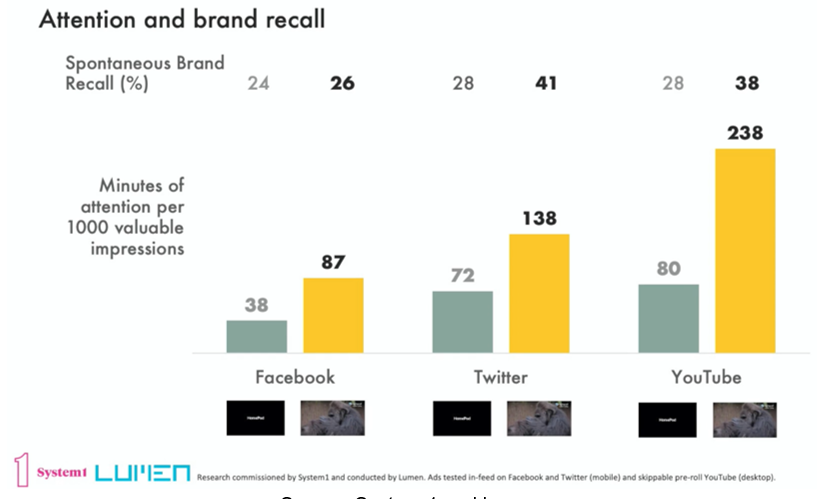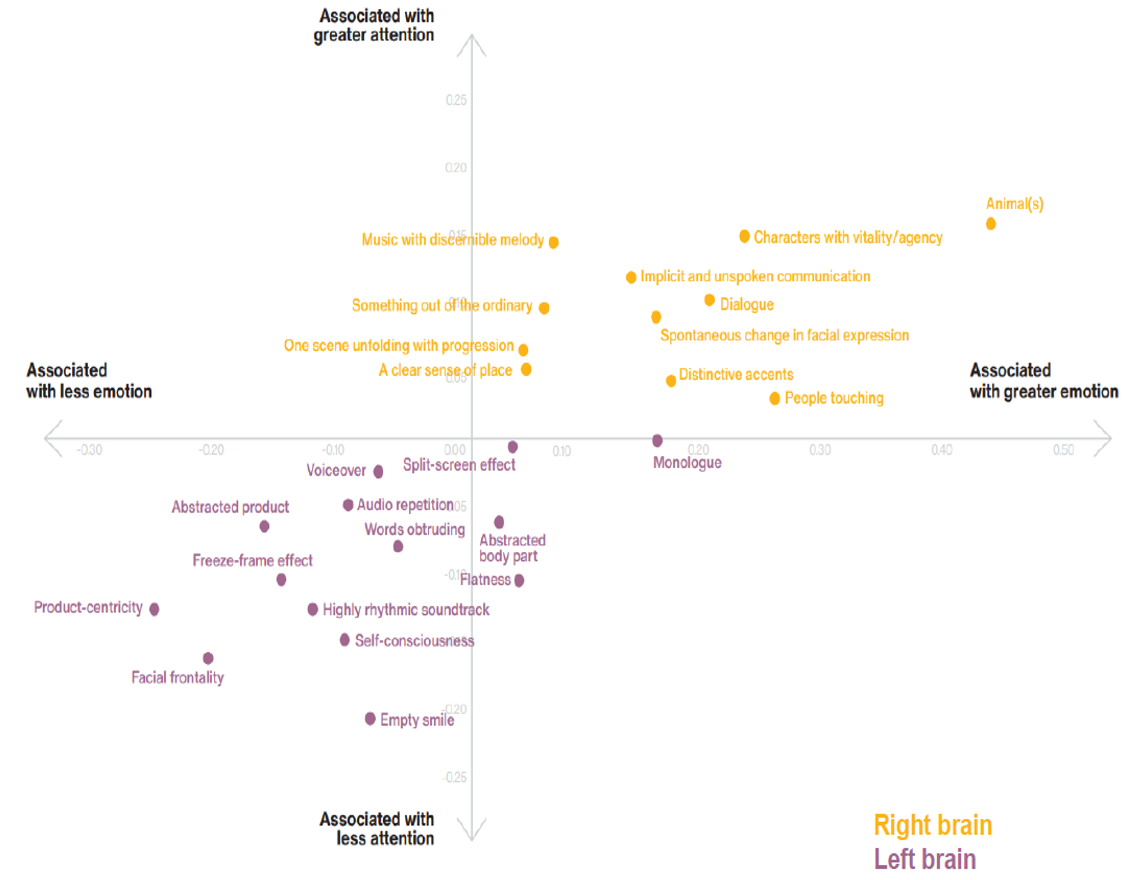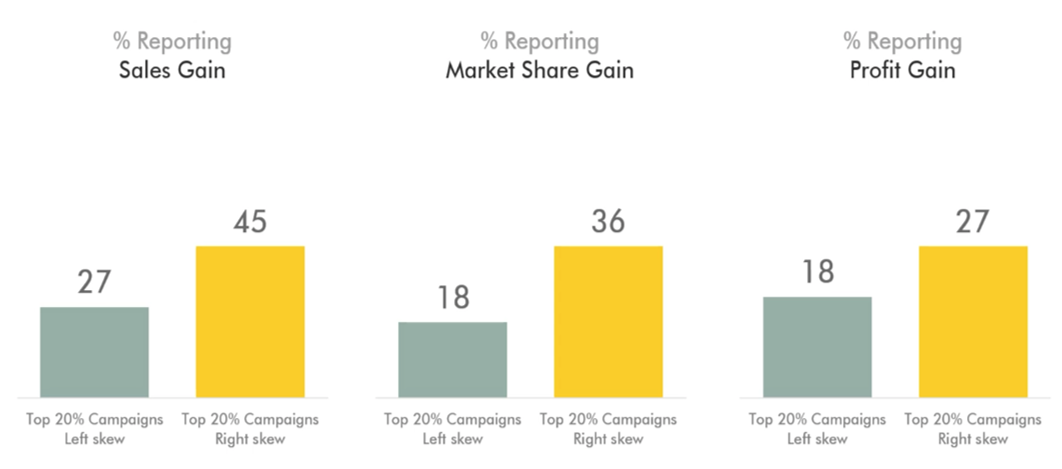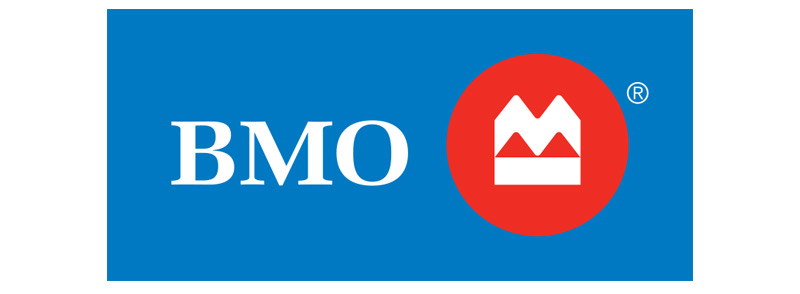Go for great: Making great work in a volume-obsessed world
Audiences are scattered across media channels. Budgets must stretch across this fragmentation. Chasing conversions is less and less cost effective. A marketer’s job has become one of near impossible prioritization. You know this. As do I.
And yet, I’m going to make an argument that you should spend more to produce less.
The era of “more, more, more”
My professional ‘coming of age’ encompasses most of the 2010s. A disruptive time in our industry – but despite the turmoil and change, it’s an era that could be given the comforting moniker – the ‘era of best practices.’
With the influx of new media options, so too came a wave of newly available information. Marketers, keen to keep up with online media and exploit this data understandably put their trust into this new system.
Cheap, accessible data flooded in. Marketers could now know with certainty which ads ‘worked,’ what did and didn’t convert sales, what they should optimize and what they should set aside. Emissaries of the new system were sent far and wide to teach marketers these emerging ‘best practices’ – many of which I still hear referenced in meetings today.
Of course, that narrative eventually fell apart.
This era of ‘best practices’ eventually became more scrutinized. Fields, Binet, et al. quickly uncovered that this data greatly overvalued sales activation work (ie. anything that converted) to the detriment of harder-to-measure brand-building work.
A less examined fallacy of this ‘era of best practices’ was the impact on the creative execution itself.
‘Best practices’ claimed that with online video, story, character and craft was unnecessary for success. Instead, creative could be formulaic, product focused, and squeezed into shorter and shorter units. With these ‘best practice’ formulas for ‘success,’ a demand for more and more units of advertising followed. Creative agencies, frustrated by the lack of creativity, turned to brand acts, PR and stunts to express themselves.
Brand acts, PR, stunts – that’s all sales activation work versus brand building. Work that must be refreshed frequently to keep working. Budgets were sliced thinner and thinner. All of a sudden, finding a healthy budget to create the video storytelling assets required to build a brand was near impossible.
Creative execution as a cost versus an asset
With media plans demanding more and more assets, creative execution was reframed as a cost associated with implementing a media plan. It’s almost as if we collectively forgot that creative has an ROI too. In fact, it remains the most important single driver of any campaign’s success.
Source: Nielsen, Insights, 2017
The ‘era of best practices’ demanded that executions be short, to the point, and product focused, especially when viewed online. ‘TV-style’ work was seen as self-indulgent. Take these two campaigns from 2018 tested by System 1 and Lumen.
This Apple commercial – product focused, large dynamic font, easily consumed ‘mid scroll’ – was the epitome of ‘best practices.’
This Barclay’s commercial relies on an analogy – a misdirect. It asks the viewer to stick around for a second to see what’s going to happen (heaven forbid, asking your audience for more than a few seconds of attention!).

Source: System 1 and Lumen
Through the lens of an external study, the ‘best practices’ don’t perform. What’s worse, the Apple commercial is quite clearly designed as the ‘product focused’ compliment to this wonderful piece of creative launched at the same time. One can only wonder how much budget was diverted away from the FKA Twigs and Spike Jonze spot in order to satisfy ‘best practices.’
Why spending more to produce less works
What makes a great ad? Intuitively we know, but what can we ‘prove?’ Fortunately, we no longer have to rely solely on ‘creative intuition’ as more published studies reveal what consumers actually respond to in finished ad creative.
When you examine these results and look at specific choices made in execution, a different best practices story from the one of the 2010s emerges. In order to garner greater attention and emotional responses from your audience (ie. the foundations of recall) ‘best practice’ is to focus on telling stories – stories that create characters and innuendos, and stories featuring popular music, dancing, humour and maybe even a little madness.
These are all executional choices that cannot be done on the cheap. They require real production budgets, actors and production craft to create realistic (or unrealistic and otherworldly) contexts. They require marketers to use their limited budgets to make great work, not just lots of it.

Source: Look Out, Orlando Wood, IPA + System 1 Group, October 2021
Great work makes great gains
The result of all that extra attention? Gains – market share gains, sales gains, profit gains.

Source: System 1
Of course, our industry knew all this before the ‘era of best practices.’ We are merely returning to what we once all accepted – just this time, we have more data to back up our ‘creative intuition.’
Now, we need to fund these ideas properly. We’ve squeezed every ounce of our budgets to satisfy media and audience personalization. Hyper targeting. Contextual relevance. Lots of smart and expensive thinking, paid off by 'efficiently' made and often thoughtless creative assets. Scroll back up to that Nielsen research and ask yourself, “Why do we keep doing it?”
Instead, make something big, wonderful and wacky. Then play the heck out of it across channels and remind yourself that frequency trumps personalization every time.
Go for great: Making “ten-year ads”
Every so often, creative work comes around that I like to term a ‘ten-year ad’. Inevitably, this is video creative because that’s the medium where stories are best told. This ad is a ten-year ad.
You could invest in brand act after brand act, years of performance marketing and only receive a fraction of the ROI. Even as CeraVe continues to invest in new work (often product focused), this work remains as a halo in the back of customer minds – positively impacting every other campaign. Creative intuition tells us this ad had a massive impact – even if its ROI will never fully be accounted for.

© CeraVe
Impactful, effective campaigns don’t have to be complex. Trust your creative intuitions. Tell stories – there’s a reason they’ve been popular for like 30,000 years. Don’t seek out a specific buyer, in a specific context, at a specific time. All those signals are just noise, appealing to the incredibly small percentage of customers about to buy.
Tell a story. Spend some money making it. And make it the best story you can tell.
For a more complete exploration of the data referenced here, please see the full presentation.
Cameron Stark is the Co-founder and head of strategy for advertising and design agency, Hard Work Club.




































